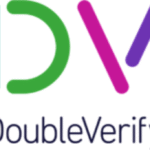Is tech companies’ IT jargon getting in the way of speaking the language of their customers?
The short answer is yes.
All major industries have their own terminology – and for good reason. Understanding the language of technology is important when tech professionals need to describe specific mechanisms and issues easily. But is it how your customer wants to communicate? Is it the most effective way to speak with your customer?
The art of the qualitative conversation
When the IT industry started, it was important to sound smart, to communicate the ability to stay on top of technology’s fast advancements. Over time, IT customers learned that language because it helped them specify what they wanted. It became a common language, in a way, to communicate on the same level.
However, many enterprise customers may not work in that language anymore. Their perspective has grown to encompass a larger, more qualitative picture. In 2021, The Malaysian Communications and Multimedia Commission (MCMC) reported that there was a spike in customer complaints about telecommunications companies (telco) services at the industry level, largely due to work from home, home-based Learning and Teaching (PdPR), and movement restrictions amid the pandemic. For security, for example, they may ask how secure a device is. How is it secured? On what levels is it secure? Can it protect me and my data from ransomware attacks?
A Trend Micro survey published in September 2021 found Asia Pacific to be the second-most vulnerable region in the world to cyberattacks, after North America. In Malaysia, 87% of organizations claimed to have suffered at least one or more successful cyber-attacks in the past 12 months. It takes serious time and money to identify, recover and rebuild from security breaches. In some cases, systems, customer relationships and company reputation may never fully recover.
This is what companies want and need to talk about: the implications of the lack of security, resulting in whether or not they can do business, much more than the specifications of the hardware or software securing their devices. In order to communicate with customers effectively, we have to speak their language, and understand their businesses on their terms, not ours.
Serving as interpreter
It is our responsibility as technology experts to interpret technical jargon in a way that is meaningful to customers. In sales, we have the unique situation of serving as a bridge between customers and our technical colleagues, and translating for both.
Take the ThinkPad X1 Fold. It’s a phenomenal product, the first of its kind in a new, foldable form factor. But the typical conversation customers want to have about the ThinkPad X1 Fold is not around hertz or nits or RAM; but applications, flexibility, and being an early adopter or corporate trendsetter.
Or, another example. We have a physical integrated shutter on Lenovo laptops that slides over the webcam. It’s a clever and useful feat of engineering, design, and user experience. For most customers, the story of its development is just that – a nice story. They’re interested. But what they care about is solving a security and privacy concern for their employers and employees.
Moreover, security is a conversation that is changing. Customers used to talk and care about securing a building, and the network and devices inside that building. It’s been that way for decades. But now, with a more hybrid workforce emerging, customers are starting to care about holistic security. It’s changed the parameters of what they’re trying to solve.
Then there’s sustainability. If an organization has told its investors and employees that it wants to support sustainability as a priority, Lenovo is well-equipped to partner with them to make their goals achievable. But the organization doesn’t necessarily want to know the percentage difference in the yield between aluminum and recycled aluminum. They need to know about our ESG credentials, and which products and solutions will make a positive difference in their eco footprints.
This is how we paint the big picture for our customers. When we talk about the ThinkPad X1 Fold, we talk not just about its specifications but its applications, and what that means qualitatively for that particular customer. The ThinkPad X1 Fold is powered by Windows 11 Pro. Powerful for employees. Consistent for IT. Secure for all. Stay productive wherever business takes you.
Tailoring the conversation with detective work
Personalizing conversations is built on understanding what organizations and their people want, what they need, what they expect, and how this relates to their customers.
In this way, we are detectives. We problem solve with the customer at the center of the discussion, investigating how Lenovo can fill the space between their needs and our offerings.
Is tech companies’ IT jargon getting in the way of speaking the language of their customers?
The long answer is also yes.
The way our customers speak about and address IT has changed over the past 30-40 years. So should we.
We must find a shared understanding that benefits both the IT company and the customer. Building this bridge creates long-term partnerships essential to successful solutions: working with businesses to help them deploy smarter technology that delivers to their business strategies.
There is no bigger sales success than when every participant is happy and confident they received what they needed. Every technology company should strive for that level of satisfaction on all sides of the table – satisfaction that is ultimately built on strategy and real, shared understanding.
By Steven Loh, Senior Sales Director, Head of Relationship Segment, Lenovo Malaysia
















